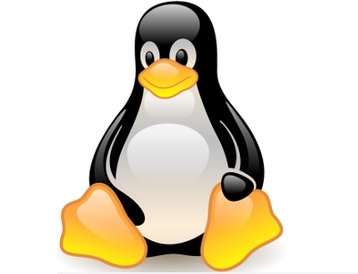Twenty-five years ago Bryan Adams topped the charts across the globe for what seemed like forever with (Everything I Do) I Do It For You, Anthony Hopkins confessed to his penchant for chianti in Silence of the Lambs and Super Mario World arrived on our small screens. At the same time, in the heart of Helsinki, 21-year-old Finnish student Linus Torvalds was working on a project that would transform the IT landscape. His vision for a free operating system has not only brought together some of the industry’s most creative and free thinkers, it’s opened up technology to people who have used it to build new products and develop new markets.
Community spirit at its best
Today, according to the Linux Foundation, 99 per cent of the top 500 most powerful computing systems run Linux, and the software has been central to the growth of the web, along with just about every emerging technology platform since, from mobile and IoT (Internet of Things) to the cloud and big data.
The reason Linux is still here 25 years on, unlike your Bryan Adams cassingle, is down to the community behind it. Linux’s ecosystem of developers is something amazing. Ok it’s not the only open source community out there, but these are critical thinkers who push technological boundaries and are wise to marketing and vendor talk. Just like Linux’s founder, they question how things are done and why. And for what? There’s often no cash incentive to spend days (and nights) glued to a screen, developing line after line of code. Maybe that’s Linux’s secret: the thousands of programmers are here for the sheer love of it - and just a little bit of recognition for their efforts.
This community isn’t just a hard core of old timers either. Nearly every Linux release includes patches from new contributors – some of whom will never return – which brings a freshness to each update, and makes possible ground breaking, and democratising, projects from the Raspberry Pi to Docker.
Innovation and competition
Now’s probably the time I should declare my interest: my company’s technology, like so many others, depends on Linux. For start-ups like mine, the attraction is two-fold. Firstly, with Linux’s low fees, emerging businesses are on a much more equal footing with larger, more established companies. We don’t have to cough up huge amounts of money before we get started. And secondly, because with Linux we’re not restricted by closed software development kits, we have been free to design disruptive and innovative products and open up entirely new markets.
Linux’s capacity for innovation spreads more widely than start-ups, as important as they are. It’s actually the driving force behind many influential tech trends. Delve deeper into developments such as cloud computing and the rise of containers for example, and you’ll find Linux at the very heart of some of the most defining technologies of this decade. Containers, big data, IoT: they’re all shaped by this open source, community-led phenomenon.
Innovation drives competition, which can only be a good thing for technology and the customers that use it. Linux, once again, is central to many of the top tech rivalries. In fact, our most direct competitor also started in the Linux stack, and I imagine many other companies will say the same.
So mainstream
When we talk about disruptive and innovative technology, it’s easy to imagine that Linux is solely the domain of start-ups – companies with limited budgets, that happen to know how to make the most from available technology. But this couldn’t be further from the truth. From data centres and mobile phones, to air traffic control and stock exchanges, much of “mainstream” business relies on technology derived from this open source tool.
The larger tech firms also understand the value of open source. Last year EMC announced it would open-source its ViPR controller, around the same time Microsoft said it was already using Linux to run a new software system for its cloud platform and IBM collaborates with developers on open source projects more than ever.
And of course there is RedHat: a company built on open source, which actually pays its engineers and developers to join communities and continue to collaborate and improve the Linux kernel it’s got so much from itself.
The future’s bright
Twenty-five years in, the Linux project shows no signs of slowing down. With increasing numbers of programmers joining the contributor ranks, and with updates arriving more quickly than ever before, it’s hard to imagine a tech world without it.
And although, as I’ve already mentioned, the bigger players are getting in on the act, my expectation is that over the coming years huge ecosystems like VMware and Microsoft will be eclipsed by Linux-based solutions, especially on the cloud, infrastructure and, increasingly, enterprise fronts.
Controversial? Perhaps. But how many other technologies have thousands of people working to improve them? How many other technologies are so freely available, giving even the smallest start-up access to some of the world’s most sophisticated software? And how many other technologies have such a track record? It’s all this that makes Linux such a powerful tool – and why I think it will still be here in 25 years’ time, when we can’t believe it’s been half a century since the Mario Brothers took gaming by storm.
Boyan Ivanov is CEO of Bulgarian software-defined storage vendor StorPool.


